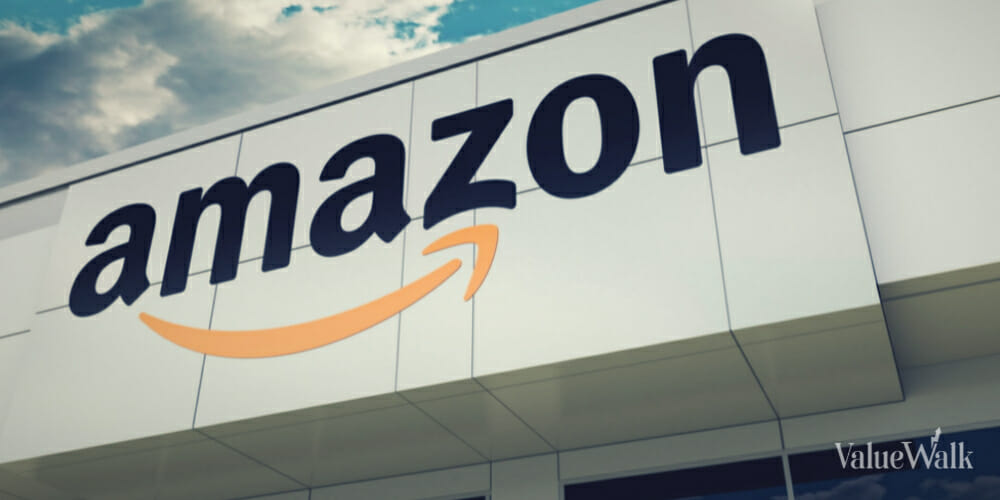Amazon (NASDAQ:AMZN) saw its stock gain about 5% in early Friday trade after the internet behemoth reported much stronger-than-expected results for the third quarter.
It seems that Amazon is bearing the fruits of implementing cost-cutting actions after recognizing that it rose too fast during the pandemic. As part of this effort, the company has laid off 27,000 employees since the previous autumn and discontinued some of its less profitable ventures.
How Amazon Performed in Q3
The company said its revenue jumped 13% to $143.08 billion from the same year-ago period, which is a higher-than-expected growth as analysts were looking for $141.4 billion in Q3 sales. All major segments recorded revenue growth with Third-Party Seller Services seeing its revenue rise as much as 20% YoY to $34.34 billion.
Online store sales jumped 7.1% while Amazon’s Physical Stores sales were up 5.6% in Q3. Region-wise, North America sales came in at $87.89 billion, up 11% YoY. On the other hand, international net sales rose 16% on an annual basis.
Advertising sales were reported at $12.1 billion, easily ahead of the expected $11.6 billion. Ad sales jumped 26% YoY, much faster than Google’s ad growth of 9% and Meta’s 23%.
More importantly, Amazon Web Services (AWS) saw its sales jump 12% to $23.06 billion, which is in line with the average analyst estimate. In the same year-ago period, AWS recorded revenue growth of 27%. Earlier this week, Microsoft and Google said their cloud segments rose 29% and 22%, respectively.
“We had a strong third quarter as our cost to serve and speed of delivery in our Stores business took another step forward, our AWS growth continued to stabilize, our Advertising revenue grew robustly, and overall operating income and free cash flow rose significantly,” said Andy Jassy, Amazon CEO.
“The benefits of moving from a single national fulfillment network in the U.S. to eight distinct regions are exceeding our optimistic expectations, and perhaps most importantly, putting us on pace to deliver the fastest delivery speeds for Prime customers in our 29-year history.”
On the bottom line, Amazon reported adjusted earnings per share of 94 cents, crushing the expected 58 cents as operating income surged to $11.19 billion compared to the $7.71 billion expectations.
As a result, Amazon’s operating margin increased from 2% last year to 7.8% in Q3 this year, crushing the expected increase to 5.5%. The seller unit mix was 60%, expanding by 200 basis points from the year-ago period and above the estimate of 58.6%.
The September quarter includes the results of this year’s Prime Day promotion, which took place in July. Amazon described it as its “biggest ever” sale.
Amazon shares fell more than 6% in the two days prior to the release of the results amid a broader tech selloff. The stock initially responded positively to the Q3 report before paring back some gains after cautious commentary on the earnings call. Market dynamics, such as these, often prompt investors to consider short selling in order to capitalize on these price movements.
Amazon’s results follow better-than-expected numbers from Alphabet and Meta earlier this week. However, shares in both tech companies fell as Alphabet faced investor concerns due to disappointing revenue in the Google Cloud division, while Meta’s decline was a result of cautionary statements about the advertising market amid the escalating conflict in the Middle East.
Chief Financial Officer, Brian Olsavsky said on the earnings call that Amazon still sees some “cost optimization” by customers, although at a slower pace than before. AWS’s operating income was $7.0 billion, rising from $5.4 billion in the third quarter of 2022, while the margin improved 600 basis points on a sequential basis.
“We’re still seeing elevated customer optimization levels than we’ve seen in the last year or year before this, I should say. So, if you look at the optimization, it’s more than a year ago, but it’s meaningfully attenuating from where we’ve seen in the last few quarters,” CEO Jassy commented.
Olsavsky also highlighted that the company is actively reducing costs across various aspects of its operations, including expenses related to fulfillment, delivery, and inventory management.
On the other hand, Jassy expressed optimism about the future of AWS as the cloud unit is experiencing an increase in the pace and volume of closed deals. Moreover, he noted that several deals were signed in September, and their impact will be reflected in the company’s performance in the fourth quarter.
“We’re seeing that optimization attenuate. I expect that to continue over time. I remain very optimistic about AWS in the medium to long term. And it’s because we have the most functionality by a large amount.”
Despite these positive comments, Amazon said it expects revenue for the fourth quarter to be between $160 billion and $167 billion, missing the consensus of $166.6 billion. The guidance calls for revenue growth of 9.5% at the midpoint of the guidance, and 14.3% on a sequential basis.
Operating income is expected to come in at $9 billion, up or down $2 billion. This represents a stark contrast to just $2.7 billion in operating income reported for the fourth quarter last year.
When it comes to the generative AI efforts, Jassy mentioned that large businesses like Adidas, Booking.com, Merck, United Airlines, and some others are building generative AI apps in AWS. The number of these companies “is substantial and growing very quickly.”
Another positive from the call is that CFO Olsavsky said Amazon is looking to slash about $9 billion in capex for this year.
“We expect fulfillment and transportation capex to be down year over year, partially offset by increased infrastructure capex to support growth of our AWS business, including additional investments related to generative AI and large language model efforts.”
Summary
Amazon’s earnings report exceeded Wall Street estimates across the board, sending shares about 5% higher. The strong performance was evident in Amazon’s global eCommerce business, an increasing operating income margin in North America, and the continued stabilization of AWS revenue growth





